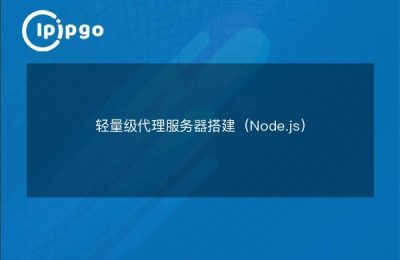
In today's digital age, IP dial-up proxy pools have become an integral part of the online activities of many businesses and individuals. Whether it's for data crawling, online marketing or privacy protection, the need for proxy IPs is increasing. Today, let's talk about how to build an efficient IP dial-up proxy pool.
What is an IP dial-up proxy pool
First, we have to figure out what an IP dialup proxy pool is. Simply put, an IP dial-up proxy pool is a collection of multiple proxy IP addresses. These IP addresses can be obtained dynamically through dial-up, and users can choose different IP addresses for network connection according to their needs, so as to realize anonymous browsing, data capturing and other functions.
Basic steps to build an IP dial-up proxy pool
Building an IP dial-up proxy pool is not difficult, but it requires a certain technical foundation and equipment support. Here are a few key steps in the build process:
1. Selection of appropriate hardware equipment
First of all, you need a server with stable performance. This server will be used to run dialup software and manage proxy IPs.The configuration of the server depends on the number of IPs you need and the number of concurrent connections.Usually a 4-core server with 8G RAM is sufficient.
2. Installation of dial-up software
Next, you need to install dial-up software on your server. There are many dial-up software available on the market, such as 3G/4G dial-up software, ADSL dial-up software, and so on. Choose the software that suits your needs and follow the instructions to install and configure it.
3. Configure dialing parameters
After installing the dialer software, the next step is to configure the dialing parameters. You need to set the dialing account, password, dialing number and other information and make sure that these parameters are correct. Once the configuration is complete, you can test it to make sure that the dialing is working properly.
4. Setting up a proxy server
After successful dialup, you need to set up a proxy server on your server. Common proxy server software includes Squid, Nginx, etc. Choose the right software and install and configure it so that it can receive the IP address after successful dialup and provide proxy services to the outside world.
5. Management and monitoring
Finally, you need to manage and monitor the entire IP dial-up proxy pool. You can write scripts or use third-party tools to count and analyze proxy IP usage to ensure the stability and efficiency of the proxy pool.
Application Scenarios for IP Dialing Proxy Pools
There are many scenarios in which IP dialing proxy pools are used in practice, and the following are a few typical examples:
1. Data capture
For scenarios that require a large amount of data capture, such as price monitoring on e-commerce platforms and data analysis on social media, the use of IP dial-up proxy pools can effectively avoid IP blocking and improve the efficiency and stability of data capture.
2. Internet marketing
In online marketing, the use of proxy IP can achieve multi-account operation and avoid abnormal behavior detected by the platform. For example, for SEO optimization, social media promotion, etc., better results can be achieved through proxy IP.
3. Protection of privacy
For privacy-conscious users, using a proxy IP hides the real IP address from being tracked and located. Whether it's for everyday browsing or the transmission of sensitive information, a proxy IP provides an extra layer of protection.
Frequently Asked Questions and Solutions
In the process of building and using IP dial-up proxy pools, you may encounter some problems. Here are a few common problems and their solutions:
1. Dialing failures
If dialing fails, first check if the dialing parameters are correct, especially the account number, password and dialing number. If the parameters are correct, try changing the dialing software or contact your service provider for assistance.
2. Proxy server not connecting
If the proxy server fails to connect, first check whether the server's network connection is normal. Second, check whether the proxy server software is configured correctly to ensure that it can receive and forward requests normally.
3. IP address blocked
If an IP address is blocked, try changing your dial-up account or dial-up number to get a new IP address. In addition, you can reduce the risk of a single IP being blocked by increasing the number of proxy IPs and spreading out the requests.
concluding remarks
Although building an efficient IP dial-up proxy pool requires a certain technical foundation, it can be accomplished successfully by following the above steps and solving the problems encountered in a timely manner. I hope this article can provide you with valuable reference to help you in the network world like a fish out of water.








